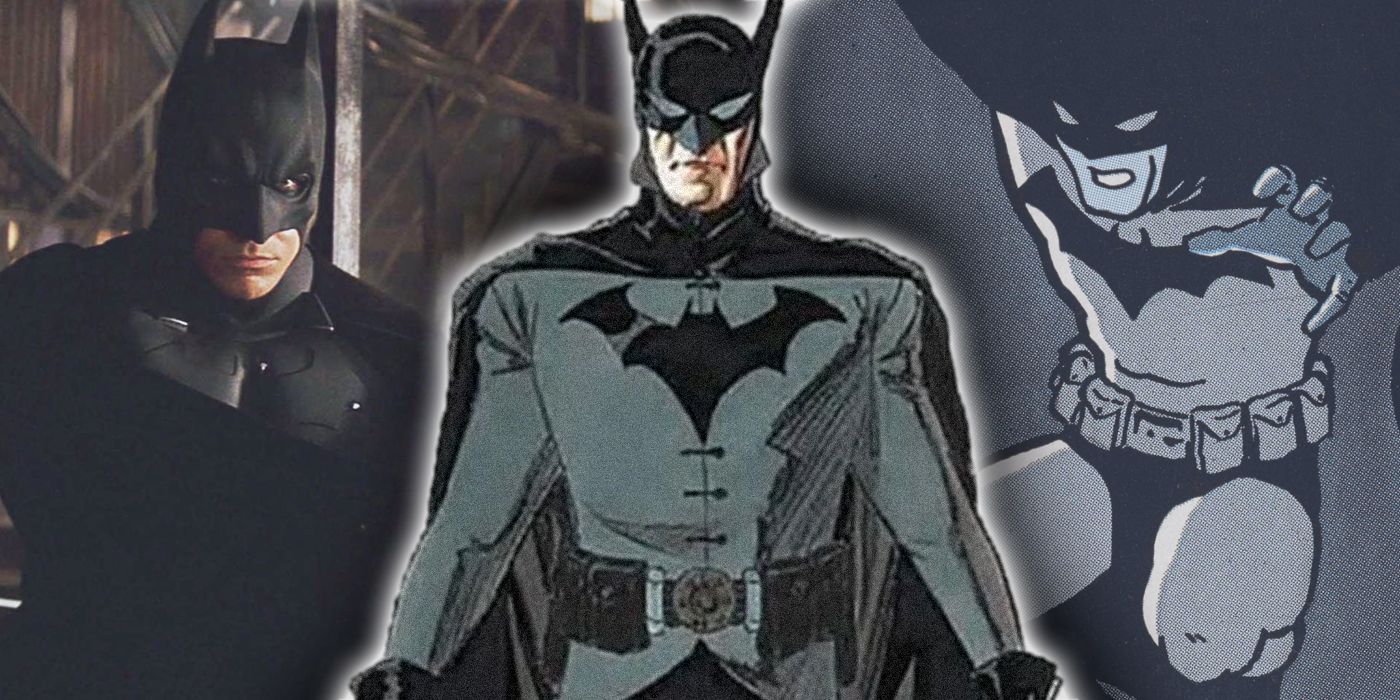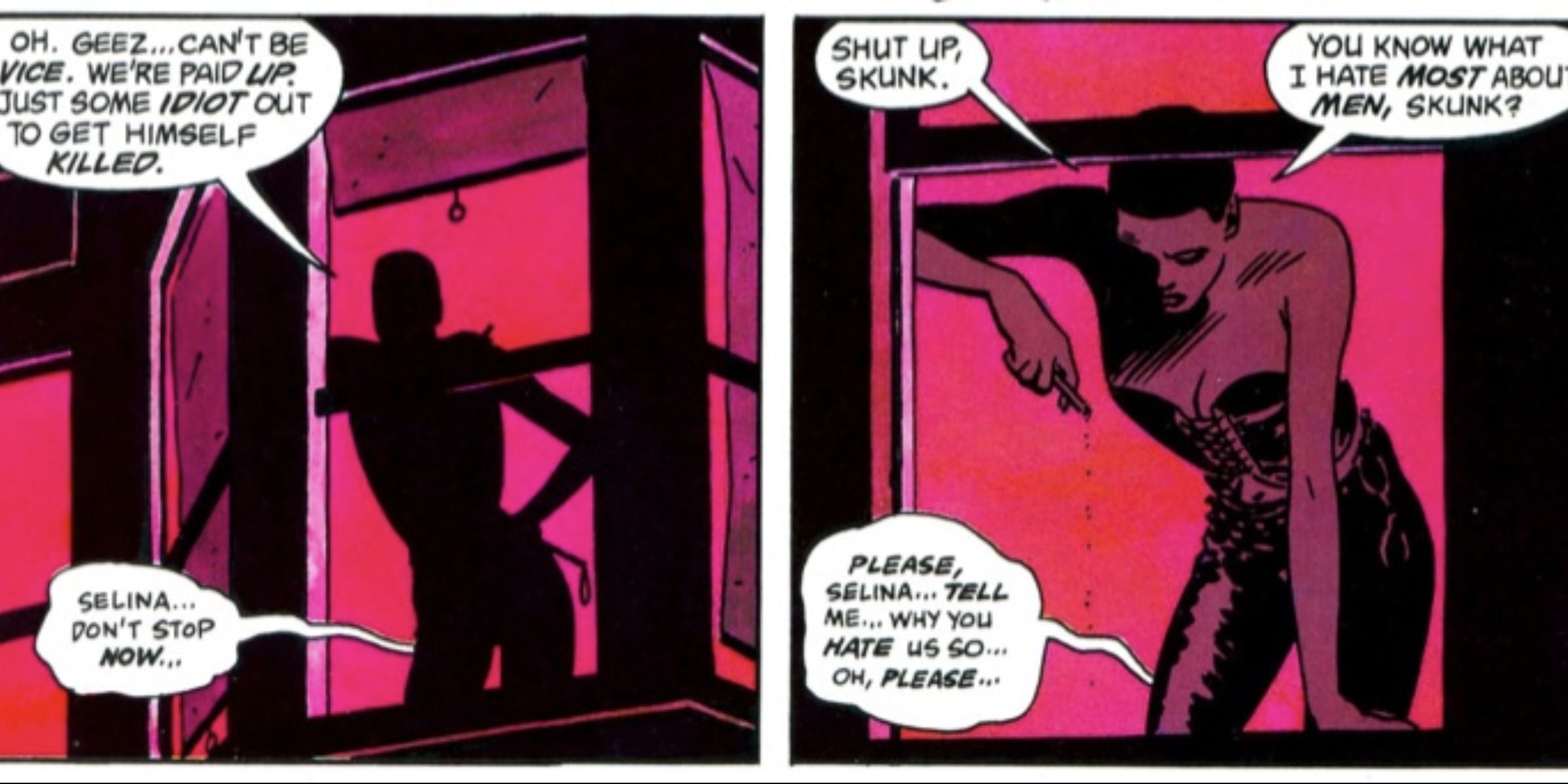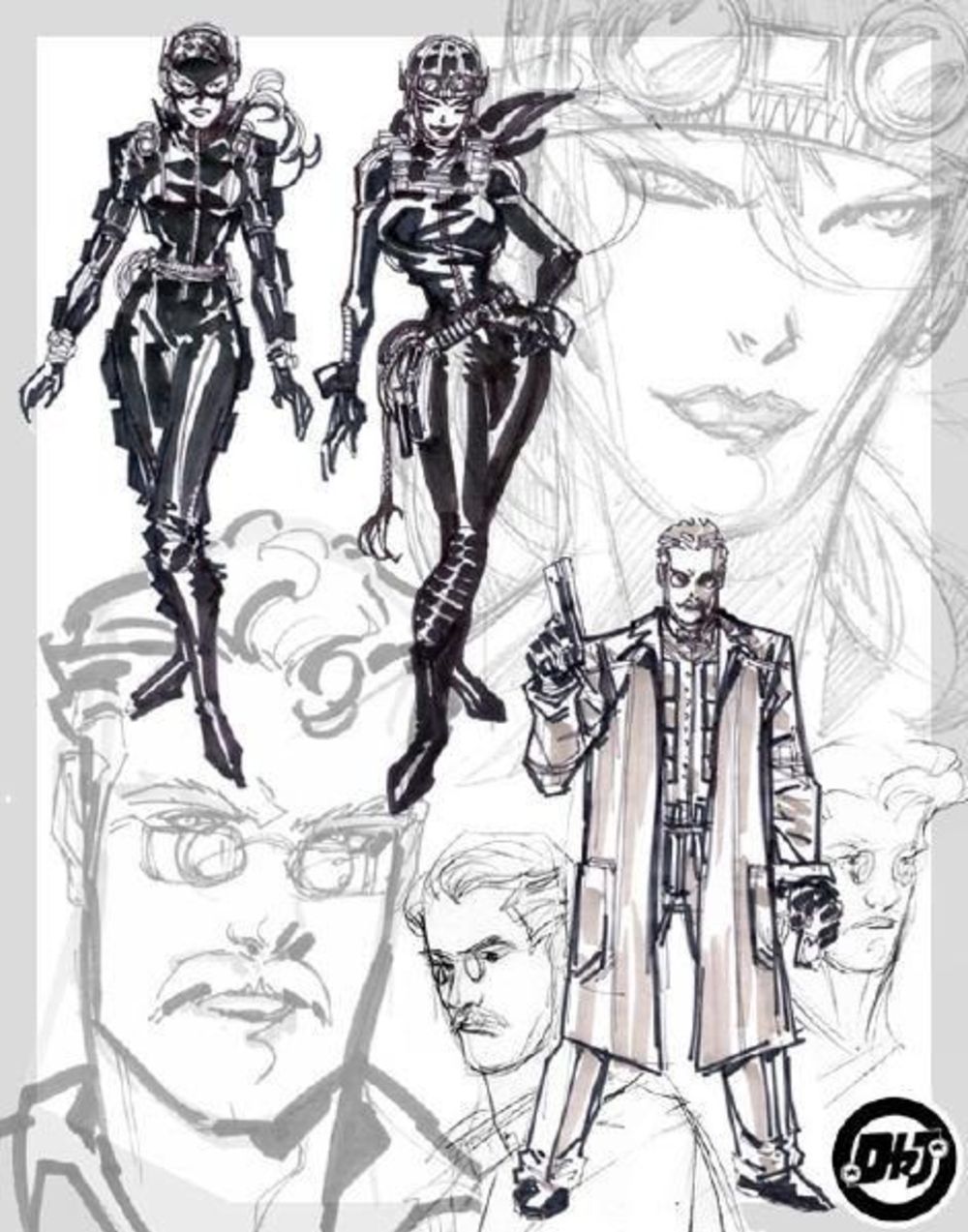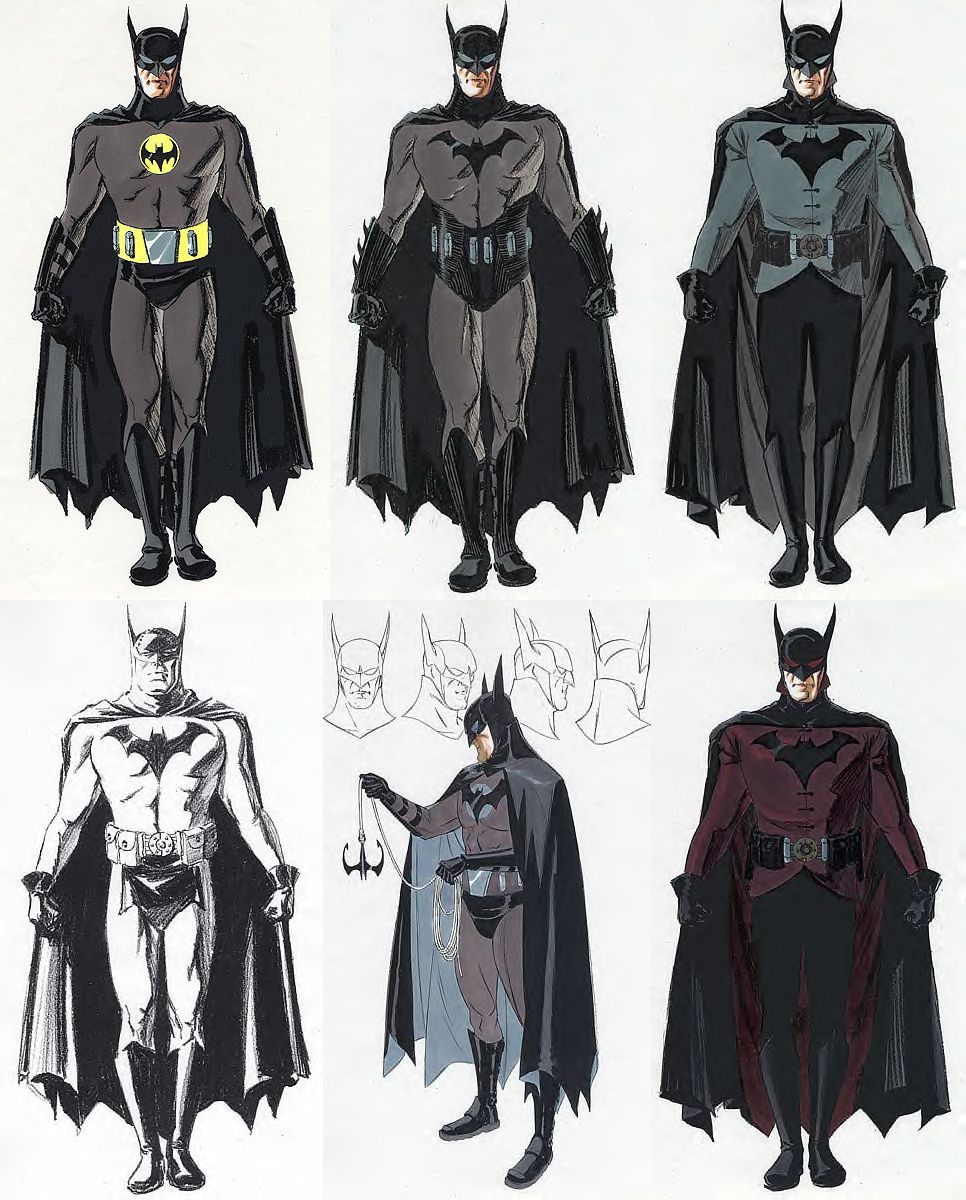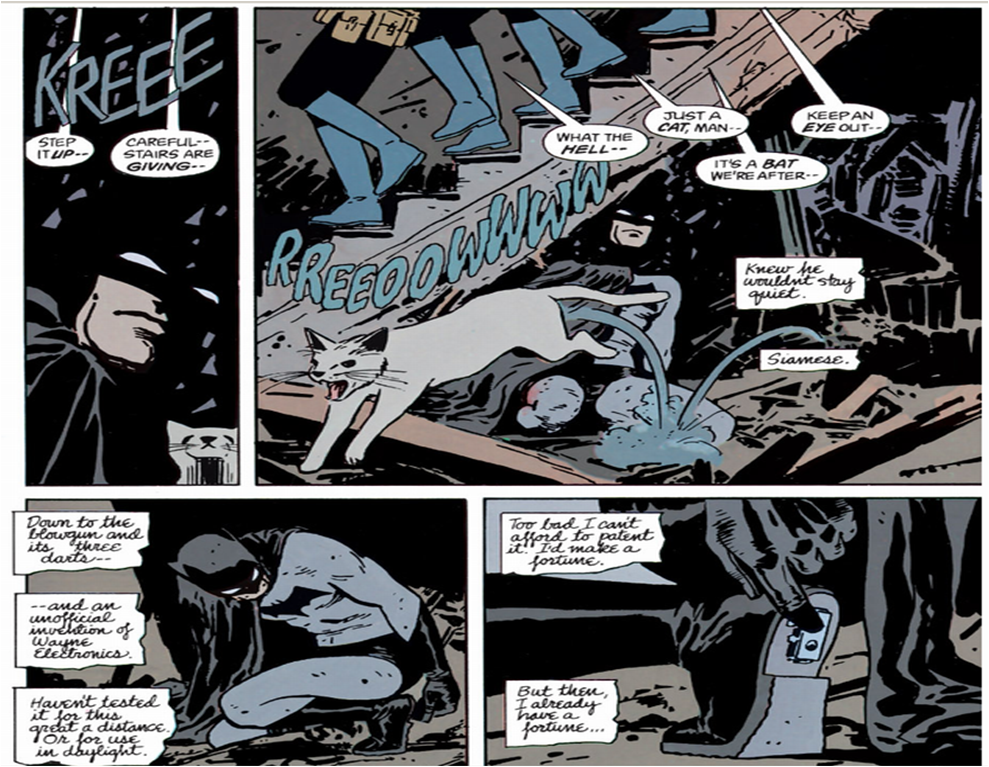Welcome to the twelfth installment of Page One Rewrite, where I examine comics-to-screen adaptations that just couldn’t make it. One of the most famous abandoned projects of the modern era is the film version of Batman: Year One, written by the comics' original author Frank Miller and directed by Darren Aronofsky.
Following the Joel Schumacher Batman films, Batman: Year One was intended as a reboot of the franchise. Miller and Aronofsky had previously collaborated on an unproduced script for an adaptation of Miller's Ronin comic. Reportedly, Aronofsky approached Christian Bale to play Batman, while the studio lobbied for Joaquin Phoenix. Ultimately, the project was abandoned and eventually mutated into Batman Begins. However, The film did get far enough in production for some concept art to exist, which Aronofsky said neither he nor Miller had anything to do with in 2013.
Miller's script has a destitute Bruce Wayne living in a tiny apartment on the lot of a junkyard, working under his mentor, Little Al. Al's family took a young Bruce in following the murder of Thomas and Martha Wayne. Bruce writes letters to his dead father, desperate for him to provide some direction and some relief to his nightmares. Flashbacks present a traditional take on the Waynes' murder -- a family night out, leaving a showing of a Zorro film, etc. But one alteration has Thomas handing a mysterious “inheritance” to Bruce before he dies.
Bruce is inspired to fight crime after witnessing a Gotham detective harass a sex worker, whose cathouse is within eyesight of the junkyard. That woman is Selina Kyle, described here as “a long, lean black woman” who works as a dominatrix. There's some speculation if Miller intended to swap Selina's race in the Year One comic, and this could be taken to be a confirmation, or at the very least an allusion to that idea.
We later learn the cathouse is actually the movie theater from Batman's origin, now dilapidated after 15 years. Bruce's encounter with Selina puts both in trouble with GCPD. In this script, Commissioner Gillian Loeb isn't only corrupt, he's the main crime figure in Gotham.
Confident in what he must do, Bruce opens his “inheritance,” a silver signet ring, bearing his father's intertwined initials T and W. After becoming a vigilante, his fist leaves a mark etched into the criminals' skin, the T and W design resembling a bat. This inspires Bruce into becoming “The Bat-Man,” soon adopting a Lincoln Continental with an exposed school bus engine as his Batmobile, and his confidant Little Al revealing to him an underground terminus that acts as a Batcave.
With the aid of Selina, and his reluctant ally Jim Gordon (the one good cop in Gotham, of course), Bruce exposes Loeb and claims his true inheritance, shortly before the 15-year window to do so closes. Selina, meanwhile, inspired by the only “real man” she's ever met, adopts “a sexy, black leather cat-burglar suit complete with ears, claws, and a tail.” (This idea of Batman as the “real man” that women swoon over later appears in Miller and Jim Lee's All-Star Batman and Robin.) The script ends with Bruce and Little Al settling into their new home, Wayne Manor.
Calling the script “excessive” is like describing a world war as a slight misunderstanding. Bruce doesn’t just write literal letters to his dead father, he seals them in envelopes and puts stamps on them. The script also includes have two separate scenes that have a suicidal Gordon sitting on his toilet, putting a gun in his mouth. Loeb is such an intensely evil and stupid boss, he doesn’t care if a boy hostage is killed when he orders a sniper to take out his captor. Bruce even loses all of his front teeth during an early mission and later wears dentures, underscoring how unintentionally over-the-top or even laughable than this theoretically “gritty” story means to be.
Batman’s portrayal is also beyond ridiculous. This “Bat-Man” has razor blades adorning his gloves in the place of the traditional fins, and Selina also adopts razor blades on her Catwoman costume. One report of Batman’s exploits has him forcing a drug dealer to eat his product, and in a later fight, he burns his enemies with white phosphorous. Batman’s response in the finale to Loeb’s boast that killing goes against his code is to throw a knife through Loeb’s eye. “I’ve got a lot of codes,” Batman tells him, before then carving Zorro’s “Z” into his cheek. (Though we’re later told Loeb survived.)
It’s undeniable that Year One, the comic, is a classic. It’s unbelievable that Year One, the screenplay, ever had a snowball’s chance of being produced in 2002, at least not without some serious rewrites.
FAN SERVICE
Not surprisingly, there are scenes that evoke Miller and David Mazzucchelli’s famous Batman: Year One comic. Moments from the original story include the incident that has Jim Gordon saving a boy from a deranged man and becoming a public hero, Gordon’s varied encounters with Detective Flass, Bruce faking a scar on his cheek to hide his identity, Gordon questioning a young, handsome Harvey Dent if he’s Batman, the bit about Batman being too smart to fall for Gordon’s set-up “crimes,” and the set pieces at the end, the abandoned tenement and bridge sequence where Bruce saves Gordon’s child. Gordon even repeats his “I’m practically blind without my glasses” line after Bruce is unmasked.
There’s also a blatant bit of fan service not in the original comic -- a scene set in Arkham Asylum (a “large, time-worn Victorian building”), where the camera passes by orderlies wheeling a “young, very pale man in a straight jacket (sic). He has green-ish hair.”
NON-FAN SERVICE
The premise of the entire film is that Batman as a concept needs to be “grounded” and portrayed as a vigilante operating in the real world, not like some kind of superhero or something.
The film's timeline doesn’t match the comic in one blatant way -- this isn’t taking place over the course of a year. The clearest indication of this is Ann, who appears pregnant early in the film and is still pregnant during its climax. More recently, Frank Miller penned a Superman: Year One miniseries that was set over the course of numerous years, so Miller's definition of "Year One" is somewhat malleable.
Gordon’s affair with Detective Sarah Essen isn’t present at all, presumably to make him a more sympathetic figure, and his wife has been renamed Ann, instead of Barbara. Loeb's obsession with collecting pop culture memorabilia is also absent from the film. The famous scene that had Batman rescuing a cat during the SWAT team’s tenement attack isn’t here. Batman's smoky confrontation with Gotham's corrupt elites, another classic moment, is also missing.
Miller still works in lines affirming that Batman doesn’t kill, even as he writes scenes that have Batman throwing knives into people, running them over, and setting them on fire. This sentiment also shows up in All-Star Batman and Robin, and it makes just as little sense here. These tactics strain credulity to an absurd degree with obviously lethal wounds. And it begs the question; if you are taking things this far, why not establish Batman as a killer anyway?
With the extreme violence, underground sex clubs and occasional f-bomb, there’s no way this was intended as a PG-13 film.
DID WE DODGE A BULLET?
Given that Batman Begins exists in place of this, yes. The nods to the original comic are fun, and it would be interesting to see how the public would’ve reacted to Frank Miller operating at Miller's late-era, over-the-top bombast when the most recent Happy Meal-friendly film starred a smirking George Clooney. Also, in fairness, this is a tighter plot than the multi-part comics storyline that inspired it. The characters are here for specific reasons, all leading to the climax, so instead of “Mistress Selina” appearing for shock value and little else for a few scenes, she’s integral to Bruce’s mission in ending corruption in Gotham.
But, essentially from the first page, this is misguided. It’s so gritty and “not your dad’s Batman” that it becomes unintentionally comic, especially when considered in the context of Miller’s contemporary work on All-Star Batman and Robin. Ridiculously over-the-top and desperate to profane Batman’s image as a genuine hero, it almost comes off as Miller deliberately embracing self-parody.
If you were to reinvent Batman to live not only in “the real world,” but also ground him in everyday technology, there could be worse ways to do this. But, at a certain point, is this truly Batman? Is a signet ring that unintentionally leaves a bat-shaped imprint as iconic as a conflicted young man confronting a colony of bats (or perhaps a singular, monstrous bat that crashes through the window?) Is an aging mechanic from the slums ever going to compete with a prim British butler? Do you want a toothless Batman riding around in his Lincoln Continental Batmobile?
The script comes across as change for change’s sake, made the more galling when considering just how much of the mythology had already been flippantly disregarded in the previous series of Batman films. It’s also unclear why reinventing Batman as Taxi Driver has any more merit than, say, doing a straight Batman film. Then again, who knows? Comics fans exasperated by Miller’s excesses might roll their eyes at this material, but perhaps a Scorsese-influenced interpretation of Gotham would’ve blown the general public’s mind. There could be a Warner Bros. exec kicking himself right now for passing on what might’ve been Joker almost 15 years earlier.
Hey, my latest novel Love is Dead(ly) is now free on Kindle Unlimited! Follow the adventures of the paranormal desperado you either love to hate or hate to love!

